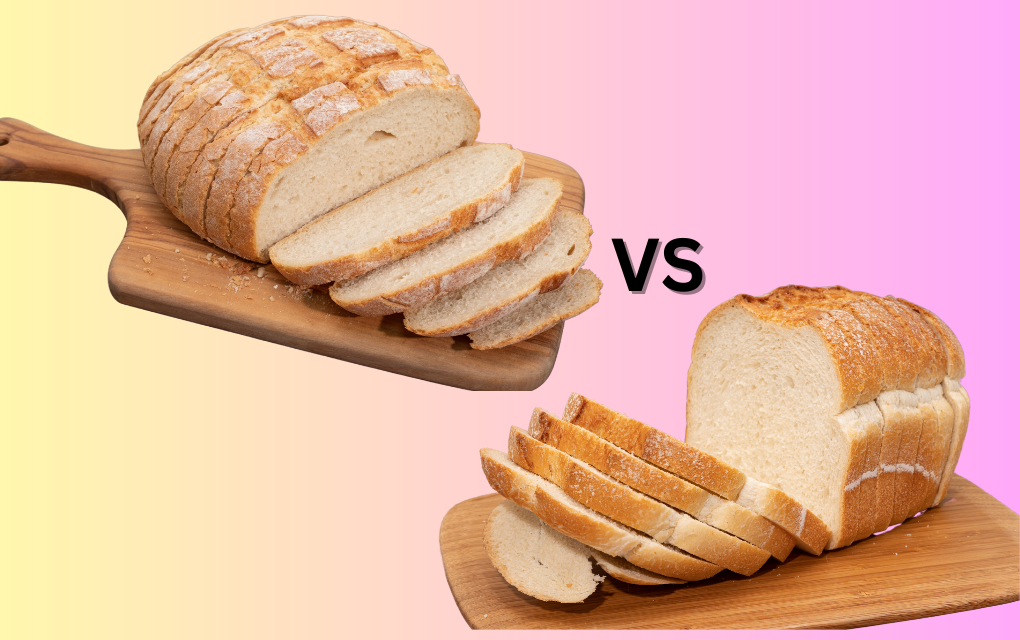Bread is a staple food in many cultures around the world. It is a good source of carbohydrates, which provide energy. However, not all breads are created equal. Some breads are healthier than others.
In this blog post, we will compare sourdough bread to white bread. We will discuss the nutritional content of each type of bread, as well as the health benefits and drawbacks of each.
SOURDOUGH BREAD |
WHITE BREAD |
|
Sourdough bread is made with a fermented dough that contains wild yeast and lactic acid bacteria. This fermentation process gives sourdough a number of health benefits that are not found in white bread. The fermentation process in sourdough breaks down the gluten and phytates in the flour, which make it easier to digest for some people. This is especially beneficial for people with gluten intolerance. Sourdough bread also has a lower glycemic index than white bread. This means that it does not cause blood sugar levels to spike as much. This makes it a better choice for people with diabetes or other blood sugar problems. Sourdough bread also contains probiotics, which are live bacteria that are beneficial for gut health and after baking the bread offers the gut a good source of prebiotics too.In addition, the fermentation process in sourdough bread increases the levels of certain nutrients, such as vitamins B and E. Here are some of the health benefits of sourdough bread:
|
In contrast, white bread is made with fast acting yeast and refined flour that has been stripped of most of its nutrients, including fiber, vitamins, and minerals. This makes white bread a less healthy option than whole grain sourdough bread. White bread also has a high glycemic index, which can cause blood sugar levels to spike. Read the ingredient list to avoid bread that has a high sugar content. Here are some of the "evils" of white bread:
It is important to note that not all white bread is created equal. Some brands of white bread are made with enriched flour, which means that some of the nutrients that were lost during the refining process have been added back in. However, even enriched white bread is still not as nutritious as whole grain bread,. But even then if the yeast used does not allow for a long period of fermentation, there will be less bioavailability of some vitamins and minerals, which come with long fermentation. If you are looking for a healthier bread option, whole grain bread is a better choice. Made with whole grains, thus type of bread retains all of the nutrients that were in the original grain. And it is also a good source of fiber, which can help you to feel full and satisfied after eating. |
So, if you are looking for a healthier bread option, sourdough bread is a good choice. It is still a good source of carbohydrates, so it is important to eat it in moderation. However, sourdough bread can be a part of a healthy diet and can offer a number of health benefits.
Here are some tips for incorporating sourdough bread into your diet:
- Choose whole grain sourdough bread. Read the ingredient list and make sure that the first ingredient is whole grain flour.
- Look for bread that has a high fiber content.
- Avoid bread that has a high sugar content.
- Eat sourdough bread in moderation.
- Pair sourdough bread with healthy toppings, such as avocado, hummus, or nut butter.
- Enjoy sourdough bread as part of a balanced meal.
We hope this blog post has helped you to understand the nutritional differences between white bread and sourdough bread. If you have any questions, please feel free to leave a comment below.

